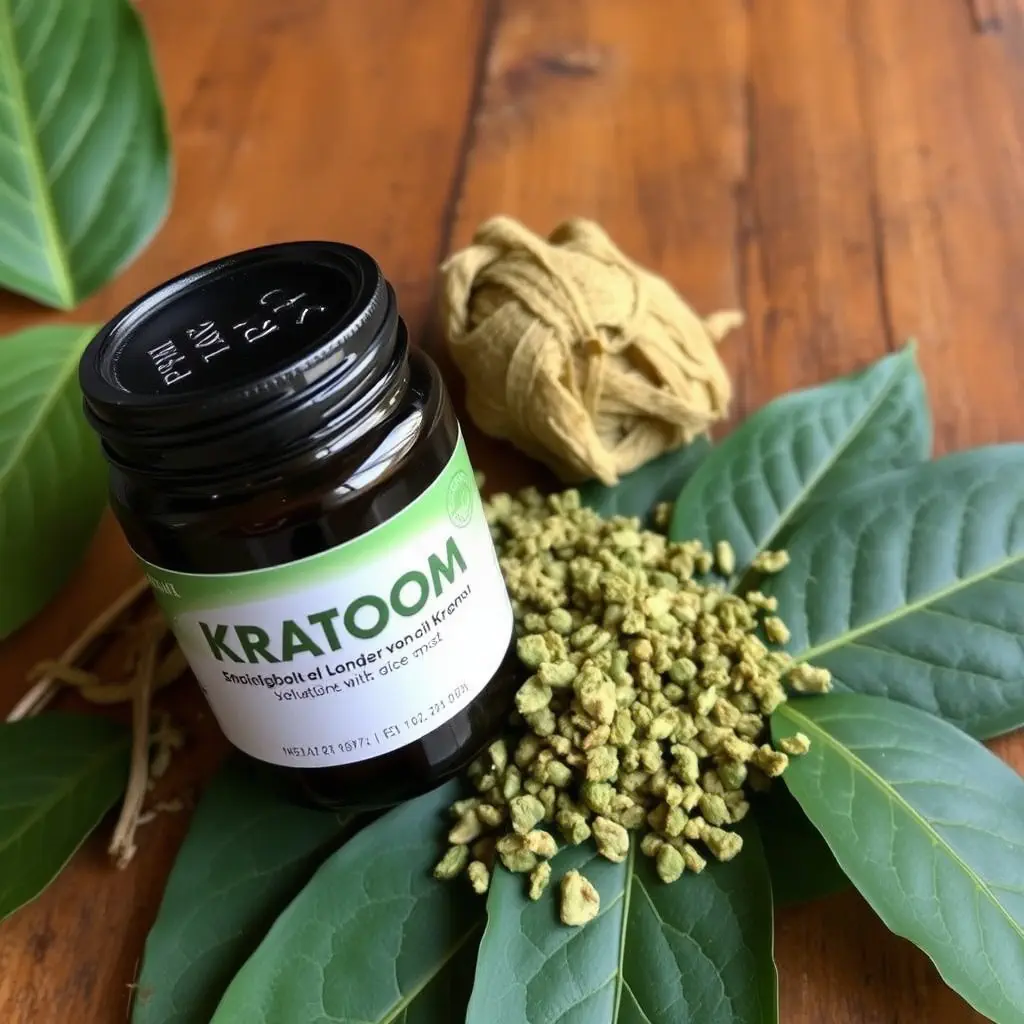When incorporating kratom into an athletic regimen for performance enhancement, it's crucial to determine a safe and effective dosage through kratom capsules, given their precise and convenient delivery method. Athletes should start with a low dose to gauge individual sensitivity, typically one or two capsules containing 0.5 to 1 gram of kratom leaf powder, as the optimal amount can differ significantly between individuals based on tolerance, weight, and metabolism. The desired effects—whether for stimulation or pain relief—will dictate how many capsules might be needed. Safety must be prioritized with a cautious approach, adhering to 'start low and go slow.' Athletes should consult healthcare professionals before incorporating kratom due to its highly individualized effects and potential legal restrictions. They must also consider the interactions with other supplements or medications. A balanced assessment of kratom's benefits and risks is essential for informed decision-making in sports performance, with a focus on evidence-based recommendations for how many kratom capsules to take for optimal results and health safety.
Exploring the multifaceted role of kratom in athletic performance, this article delves into the nuances of kratom dosage with capsules for optimized sports excellence. Unveiling the scientific underpinnings of kratom’s influence on endurance and strength, we examine how it can be integrated into an athlete’s regimen for enhanced recovery and sustained energy levels. Athletes seeking to leverage kratom must navigate its effects carefully; this piece provides guidance on safe usage practices to support peak performance. Key considerations on the dosage of kratom capsules and their impact on athletic endeavors are explored, ensuring a well-rounded understanding of this emerging performance aid in the sports world.
- Optimizing Athletic Performance: Understanding Kratom Dosage with Capsules
- The Science of Kratom and Its Impact on Endurance and Strength
- Safe Kratom Usage for Enhanced Recovery and Energy in Athletes
Optimizing Athletic Performance: Understanding Kratom Dosage with Capsules

When integrating kratom into an athletic regimen to optimize performance, determining the appropriate dosage via capsules is crucial for safety and efficacy. Kratom capsules offer a precise and convenient method for ingestion, allowing athletes to tailor their intake according to their specific needs. It’s often recommended to start with a low dose to gauge individual sensitivity, as the optimal amount of kratom can vary significantly among users. For instance, a common starting point for many individuals is one or two capsules, which typically contain around 0.5 to 1 gram of kratom leaf powder. This preliminary step is essential to assess how one’s body reacts before incrementally increasing the dosage if necessary.
Factors such as tolerance, weight, metabolism, and the desired effects play a pivotal role in dictating the appropriate dosage. For example, someone seeking stimulating effects might consume more capsules than another aiming for pain relief. It’s imperative to approach kratom use with caution and to adhere to a ‘start low and go slow’ mantra. Athletes should be well-informed that the effects of kratom can vary widely, and it’s always wise to consult with a healthcare professional before incorporating kratom into an athletic performance routine. Additionally, it’s important to monitor how kratom interacts with other supplements or medications and to be aware of the legal status of kratom in their jurisdiction, as its legality can differ by region. Understanding how many kratom capsules to take is a matter of personal experimentation, guided by professional advice and a careful consideration of individual factors.
The Science of Kratom and Its Impact on Endurance and Strength

Kratom, a plant native to Southeast Asia, has garnered attention within athletic communities for its potential ergogenic properties. The science behind kratom’s effects on endurance and strength stems from its alkaloid content, primarily mitragynine and 7-hydroxymitragynine, which interact with the body’s opioid receptors. These interactions can lead to increased pain threshold, reduced fatigue, and enhanced stamina, all of which are beneficial for athletic performance. When considering the use of kratom for performance enhancement, athletes often inquire about how many kratom capsules to take. The optimal dosage can vary greatly depending on individual tolerance, physiology, and the specific strain of kratom used. It is crucial to approach kratom with caution, as overconsumption can lead to adverse effects and may be harmful to health.
Incorporating kratom into a training regimen should be done with careful consideration of its impact on both short-term performance and long-term health. While some studies suggest that kratom can improve muscular strength and endurance by modulating neurotransmitter release, more research is needed to fully understand its effects and establish safe dosing guidelines for athletes. It’s important for individuals to consult with healthcare professionals before integrating kratom into their athletic support routine, especially since its legal status varies by region and its use may be subject to regulatory restrictions. Understanding the science of kratom and its potential impact on athletic performance requires a balanced approach that weighs the benefits against the risks associated with its consumption.
Safe Kratom Usage for Enhanced Recovery and Energy in Athletes

Athletes often seek methods to optimize their recovery and energy levels for peak performance. Kratom, a plant-based supplement derived from the leaves of Mitragyna speciosa, has gained attention in this regard. Safe kratom usage can be a pivotal aspect of an athlete’s regimen, particularly when it comes to post-exercise recovery and energy maintenance. It is crucial for athletes to understand the appropriate dosage as overconsumption can lead to adverse effects. Generally, the recommended dose of kratom capsules for athletic performance support falls within a narrow range, typically starting from one or two capsules, depending on the individual’s tolerance and the specific strain used. Athletes should consult with healthcare professionals or follow the guidance of experienced practitioners to determine how many kratom capsules to take, as the optimal dosage can vary based on factors such as body weight, metabolism, and personal sensitivity.
The most commonly recommended strains for recovery and energy are those that contain alkaloids like mitragynine and 7-hydroxymitragynine, which are believed to contribute to the plant’s beneficial effects. These strains can help alleviate muscle soreness, reduce fatigue, and promote a sense of well-being, all of which are essential for athletes in their recovery process. It is important to note that while kratom can be a valuable tool for athletic performance support, it should be used responsibly as part of a comprehensive training and nutrition plan. Regular monitoring of one’s response to kratom is essential, and any notable changes in health or performance should prompt a reevaluation of its use in conjunction with a healthcare provider.
In conclusion, the potential of kratom as a support tool for athletes seeking to optimize their performance is promising, though it must be approached with caution and proper dosing. The scientific evidence suggests that carefully calculated kratom capsule intake can play a role in enhancing both endurance and strength, offering a novel approach to athletic training. For those interested in the therapeutic properties of kratom for recovery and energy, understanding how many kratom capsules to take is essential for safe usage. Athletes are encouraged to consult with healthcare professionals before integrating kratom into their performance regimen to ensure its responsible use complements their overall training and wellness strategies. As research continues to evolve, so too will the understanding of this complex plant and its role in the realm of sports science and performance enhancement.






